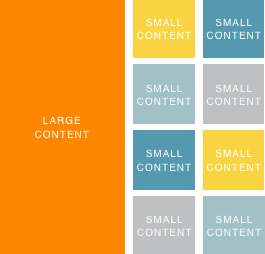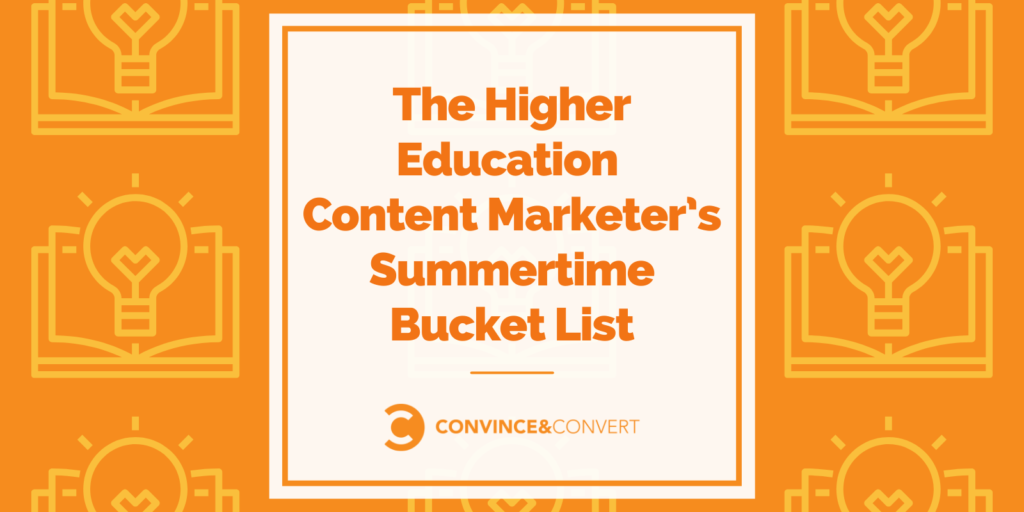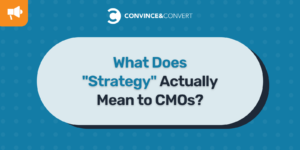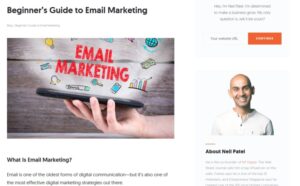During my years as a higher education marketer, summer always felt like a small reprieve. Campus was quieter, parking was more plentiful and coffee shop lines were shorter. It was also that magical time of year that I had just a little more time to plan content for the academic year starting in August. Or so I thought. In actuality, summer always went by faster than I anticipated.
While I can’t slow down time for you, I have put together the following short list of things you can do right now to reflect on your higher education content marketing efforts more strategically, and capture specific, effective ideas for the semesters ahead.
#1. Meet your audiences where they’re at. Literally.
Do you know your target audiences? Like, really know them? According to Content Marketing Institute’s 2021 B2C trend report, only 26% of B2C marketers increased time spent talking with their customers last year, and only 18% revisited their customer personas.
Higher education is unique in that marketing teams are usually surrounded by the people for whom they are developing content – students and alumni for starters. You can gain a distinct competitive advantage by dedicating more time to directly interacting with your audiences and those who are closest to them, in order to discover what they truly value.
Talk with the people who get direct feedback every day.
While the majority of students take a summer break, staff work year-round. Summer is a good time to invite other departments to participate in your content planning and creation process. One of the most insightful practices you can do is to host discovery sessions between members of your marketing team and others who provide services to your audiences. This could include colleagues from recruitment, student services, academic program directors, career services, or alumni relations.
Prepare a list of questions about your target audience that would allow you to gain additional insights about them. Try to understand them from the point of view of another team. Ask questions like “What are the most frequent questions that you get asked?”, “What do students/alumni express to you as their biggest frustrations?”, “What information seems to be the most helpful to them?”.
With each conversation, you will gain a better understanding of how your marketing content can support your audiences throughout their journey at your college or university.
Attend events
In addition to collecting organizational insights, it is also helpful to get firsthand knowledge of audience interactions. While summer is not quite as busy, it is likely there will be institutional events that you can attend such as:
- Career events
- Commencement
- Recruitment and alumni events
- New student orientations
Events like these provide a great opportunity for you to directly observe attitudes, motivations and pain points. Are they hesitant about anything? What do they seem most excited about?
Taking the time to understand your audience’s experiences first hand will allow you to create engaging content for them in a more meaningful and personalized way.
Audit a summer class
This is a great option to consider if you are seeking a deeper understanding about an audience for a specific program offering. Immersing yourself in their same learning experience will allow you to more authentically communicate that to future students.
Compare notes and document what you’ve learned
Invite multiple members of your content team to take part in these sessions and events as well. For instance, consider writers, designers, social media managers, media specialists, etc. After you’ve all had a chance to attend a few gatherings, regroup to reflect on what everyone learned. You can then utilize the insights gained through this process to build out customer journey maps for each of your target audiences.
#2. Give existing content a new spin
Before you start brainstorming 100 new ideas to add to your content plan, take time to consider how to repurpose and atomize work you’ve previously published.
Start by reviewing your digital analytics. What content has the most engagement from each of your channels (website, blog, social media, etc.)? Are there ways you can repackage this top-performing content to utilize it in a new way?
Then look through your content library. Do you have existing “large content” pieces that address your audience’s needs? Can it be broken down into bite-size nuggets? Look back on things like event recordings, research reports or long-form blog posts to name a few.
At Convince & Convert, we recommend that for every large piece of content you have, you should try to create eight smaller pieces as well. This is not a hard and fast rule – you can adapt as it makes sense for your needs. Even if you only get three additional pieces of content from the original, you’ve still tripled the outcome.
Atomization Example for Higher Ed Content Marketing

Convince & Convert recommends atomizing your large content into eight smaller assets.
For example, let’s say your institution hosted a webinar for prospective students to communicate important information about how to enroll. If you have a recording and the slides from that event, you could use those assets to create several mini items. These can be used for future lead generation and lead nurturing campaigns. This could include:
- A new web page showcasing the event recording for on-demand viewing
- Social media graphics featuring pull-quotes from the event
- Short video clips featuring event speakers
- Infographics on key concepts covered in the event (how to apply is a great one for complicated admissions processes)
- Animated videos that answer questions asked at the event
- Interactive quizzes featuring enrollment questions for web or social
- Digital guides that provide more detailed information on topics from the event
- Downloadable checklists for new students to reference
Breaking down long-form content into multiple pieces will allow you to have a variety of materials to engage your audience throughout their journey, in whatever format they prefer. This will keep key messages consistent.
#3. Take your vacation time…and admit when you need help early on.
Recent research by Salesforce.org found that a staggering 73% of higher education staff find it challenging to maintain their wellbeing. Also, 76% find it challenging to maintain work/life balance. If you want to have fresh content, you need to find the time to refresh yourself first. Use vacation time this summer and step away from the computer. Taking time to recharge yourself physically, mentally and emotionally will do wonders for finding inspiration for that next big creative idea.
Once you’ve taken time for yourself right now…then you can start planning how to help your future self, too.
As you start to plan out your content for the months ahead, purposefully try to spot areas where you may need extra support. Think honestly about your team’s priorities and capabilities. Plan to address any pinch points from the beginning. This will allow you to make a business case for the budget or personnel you need to ensure success early on. It’s best to identify before resources are already allocated or your time is maxed out in the busy fall semester.
73% of higher education staff find it challenging to maintain their wellbeing. Also, 76% find it challenging to maintain work/life balance.
Click To Tweet
Higher Education Content Marketing Considerations:
- Interdepartmental teams. Depending on the size of your college or university, sometimes there are multiple content teams, or colleagues with similar skill sets, who can offer support when you need it. If budget is a concern, try forming a collaborative team of colleagues from different departments who are interested in planning and creating content. I have had a great experience doing this with members from recruitment, IT and instructional design, for example.
- Interns and student workers. While more affordable than hiring a full-time employee, this route can also take quite a bit of time depending on your institution’s hiring policies. However, giving enthusiastic and talented students an opportunity to gain experience is always worth consideration and is something that can also be built-in to your long-term processes.
- Pre-approved contracts. If you want to outsource work to a third party, start by reviewing your institution’s policy for hiring on a contract. They most likely have a list of pre-approved vendors on file, which could be your quickest route for urgent needs.
- Agencies. If you’re looking to outsource entire projects from A-Z, a marketing agency may be what you need. Typically an agency will be at a higher price point. However, in return you will get more service in multiple areas, including project management, writing and design.
- Recruitment firms. If you need to find a freelancer with a unique talent or for a short-term project, recruitment firms can utilize their deep networks to quickly find high-quality candidates without the need for you to sort through countless resumes for a perfect match.
- Self-service platforms. Sometimes that extra talent you need can be found at the click of a button. Sites like Upwork and Fivrr allow you to easily match your needs to independent contractors.
If at any time along the way you find that you need some expert support for your higher education content marketing needs, reach out to us for direct assistance or a custom recommendation.
The post The Higher Education Content Marketer’s Summertime Bucket List appeared first on Content Marketing Consulting and Social Media Strategy.




